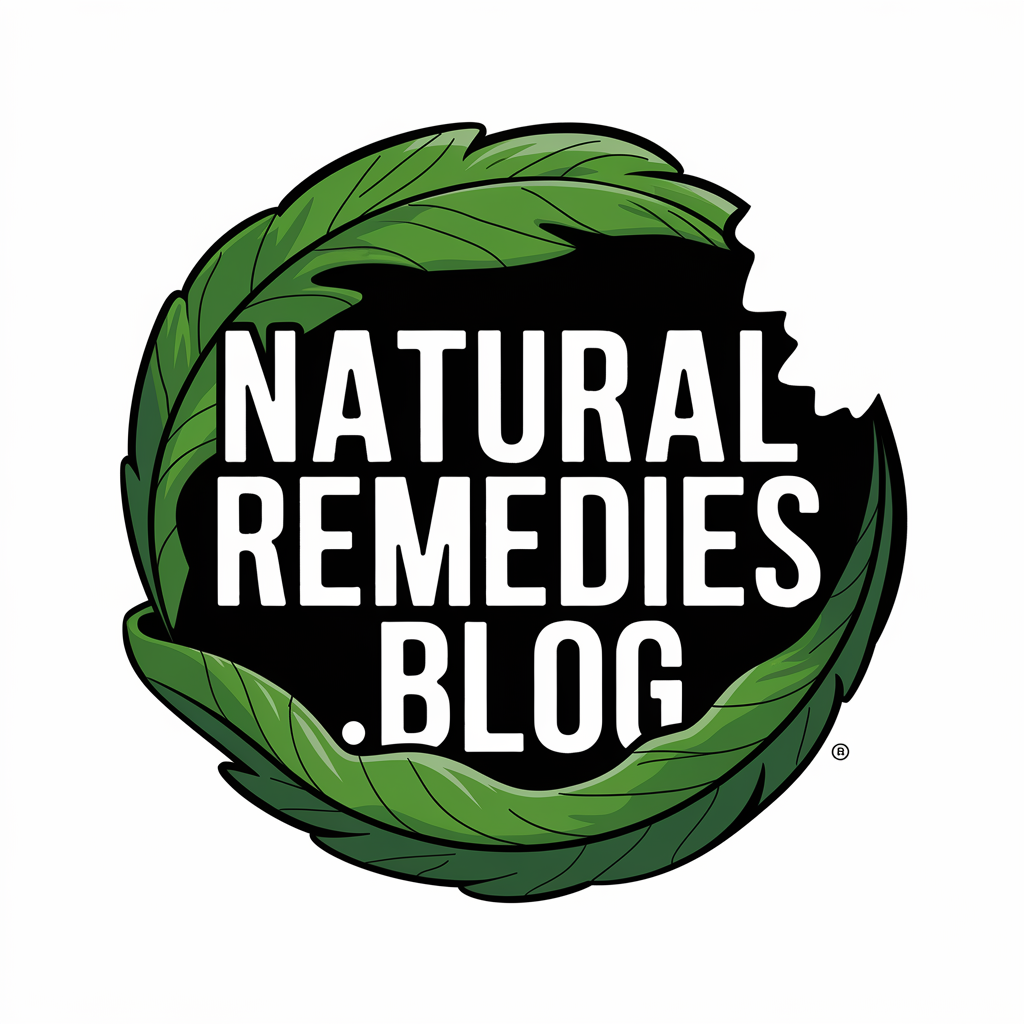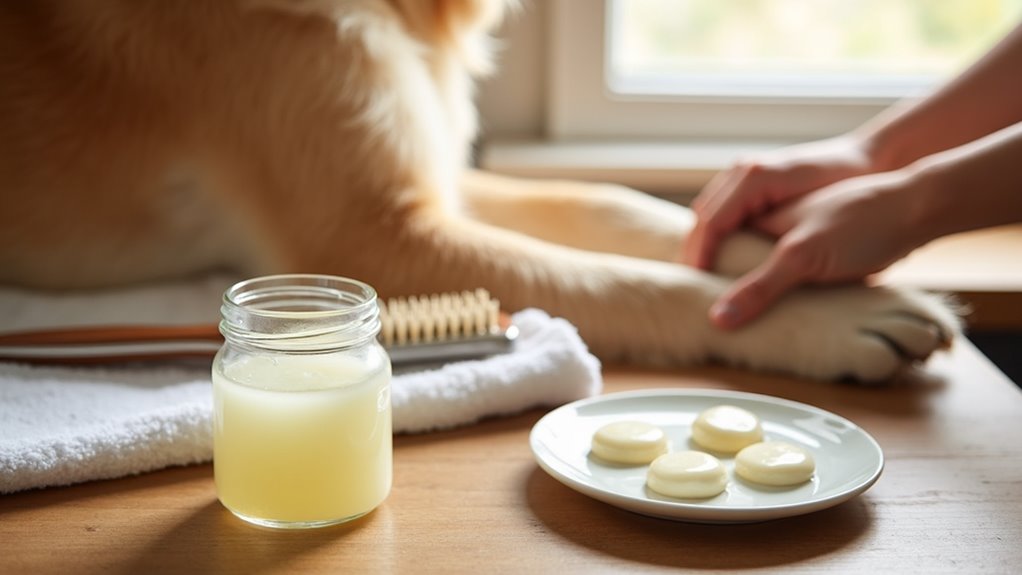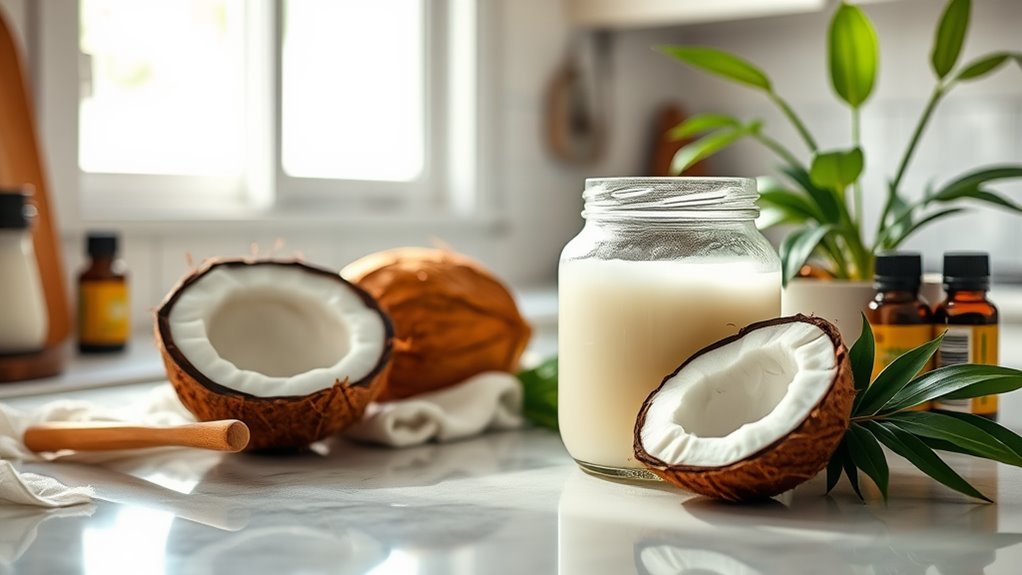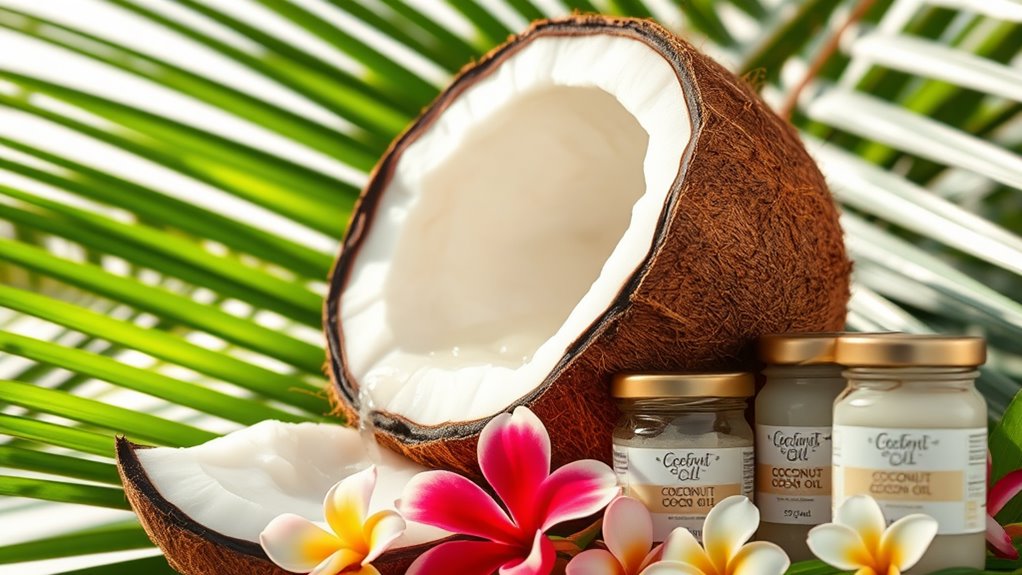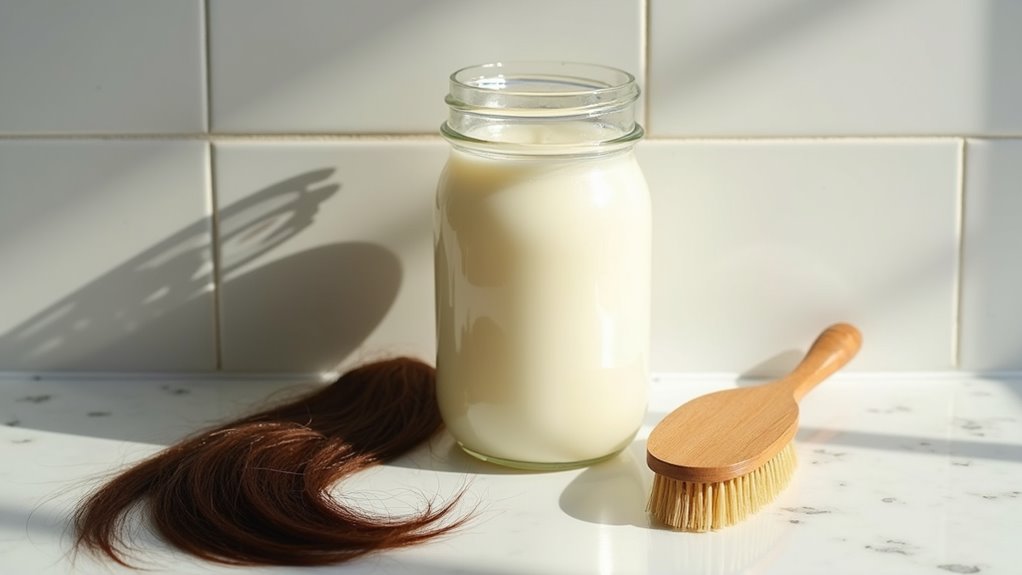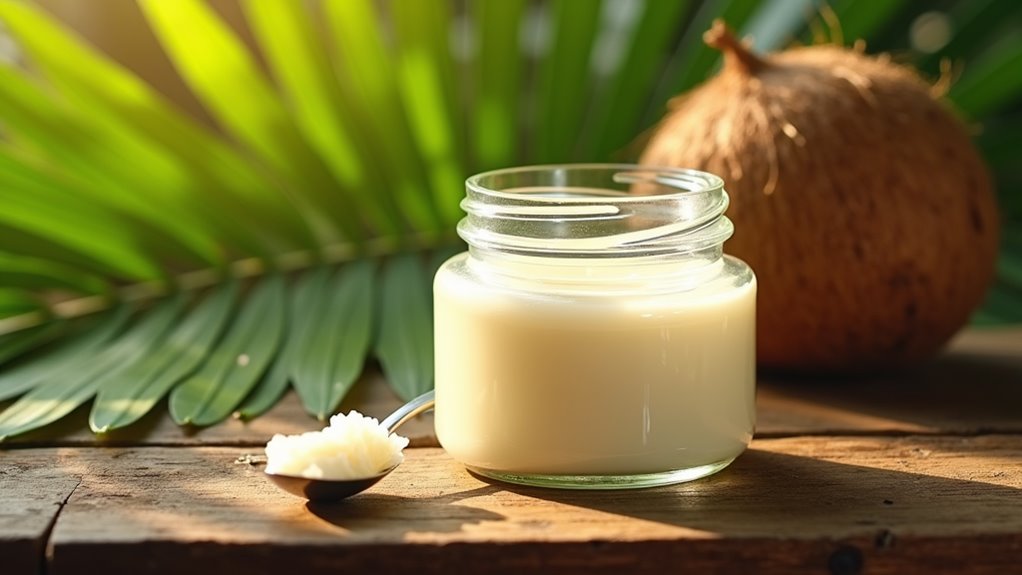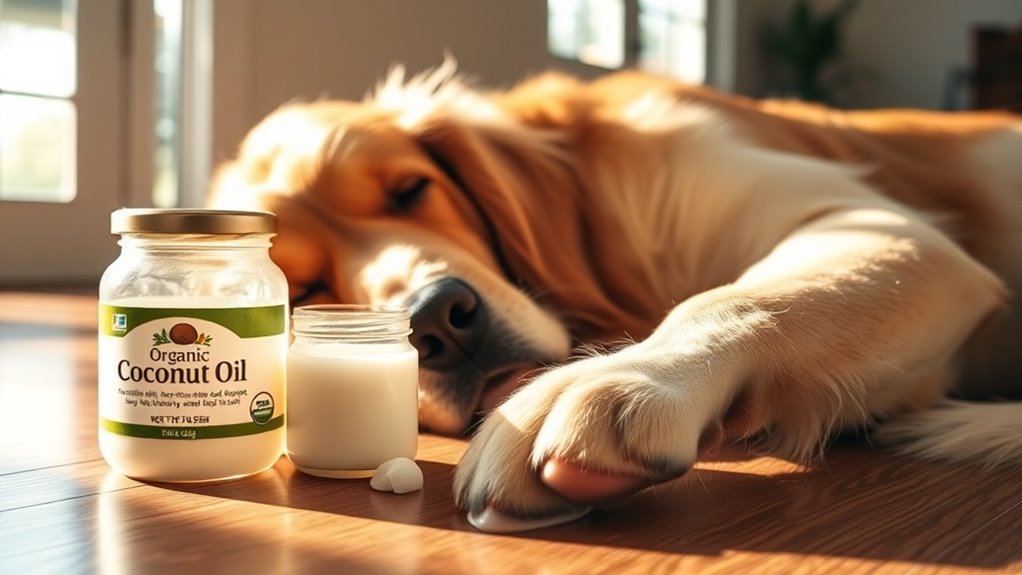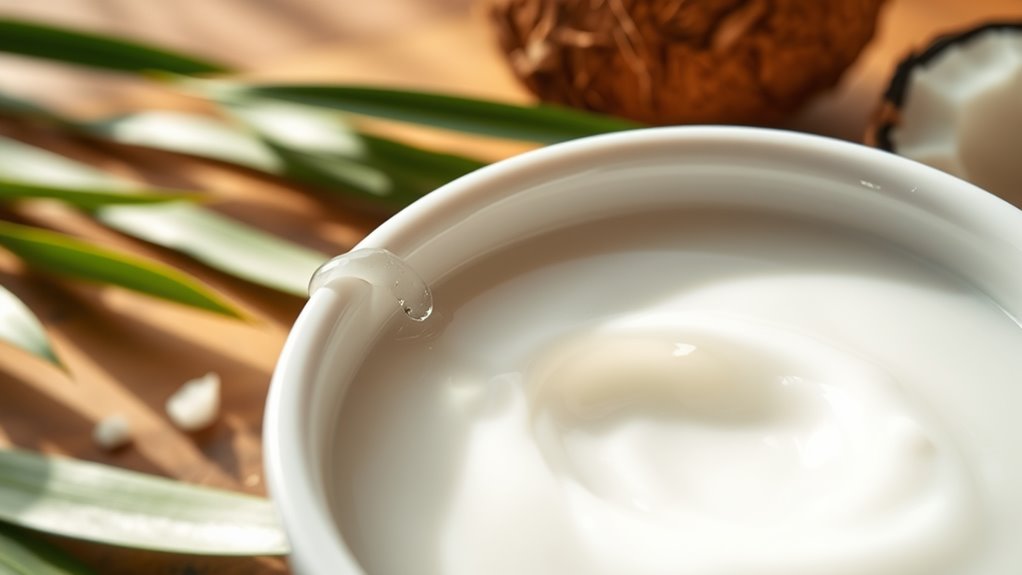5 Ways to Use Coconut Oil on Dogs That Vets Approve
You can safely use coconut oil on your dog in five vet-approved ways: treating dry skin and hot spots with topical application, practicing oil pulling for dental health, supporting digestive function through dietary supplementation, repelling pests with a light coating, and boosting nutrient absorption with MCTs. Apply a thin layer 2-3 times daily for skin issues, use small amounts for oral care, and add gradually to food for internal benefits. Understanding proper application methods ensures optimal results for your pet’s health.
The Science Behind Coconut Oil’s Benefits for Dogs
While coconut oil has gained popularity among pet owners, its benefits stem primarily from its composition of medium-chain triglycerides (MCTs) and lauric acid.
When you give your dog coconut oil, these MCTs are quickly metabolized by the liver, providing an immediate source of energy and supporting cognitive function.
The lauric acid in coconut oil exhibits antimicrobial properties, helping combat various pathogens.
Research indicates that coconut oil for dogs can enhance nutrient absorption, support thyroid function, and maintain skin health.
The MCTs also demonstrate anti-inflammatory effects, potentially aiding dogs with arthritis or inflammatory conditions.
Regular consumption of coconut oil can promote digestive comfort and help regulate your dog’s bowel movements.
Treating Dry Skin and Hot Spots With Coconut Oil
When applied topically, coconut oil provides significant relief for dogs suffering from dry, itchy skin and localized hot spots. The oil’s antimicrobial and anti-inflammatory properties help reduce bacterial growth while soothing irritated skin tissue.
You’ll need to apply a thin layer directly to the affected area 2-3 times daily.
For maximum effectiveness, prevent your dog from licking the treated area for 5-10 minutes after application. This allows the oil to penetrate the skin.
If treating hot spots, carefully trim the surrounding fur first to prevent moisture retention. Monitor the area for signs of improvement or adverse reactions within 24-48 hours.
Using cold-pressed coconut oil ensures you get the maximum beneficial compounds for treating skin conditions.
Enhancing Dental Health Through Oil Pulling
Beyond its skin-healing properties, coconut oil offers significant benefits for canine dental health through a practice known as oil pulling.
When you apply coconut oil to your dog’s gums and teeth, its antibacterial properties help reduce harmful oral bacteria that cause plaque, gingivitis, and bad breath.
To perform oil pulling, gently massage a small amount of virgin coconut oil onto your dog’s gums and teeth for 30 seconds daily.
The oil’s medium-chain fatty acids penetrate dental biofilm, while its lauric acid content fights periodontal pathogens.
You’ll notice fresher breath and healthier gums within weeks of consistent application.
Supporting Digestive Health and Metabolism
Thanks to its unique molecular structure, coconut oil supports optimal canine digestive function through multiple mechanisms. The medium-chain triglycerides (MCTs) in coconut oil convert directly into energy, bypassing the typical digestive process and reducing strain on your dog’s system.
You’ll find that coconut oil’s antimicrobial properties help balance gut flora, combating harmful bacteria while promoting beneficial microorganisms.
It also stimulates enzyme production, enhancing nutrient absorption and metabolism. The oil’s anti-inflammatory compounds can soothe irritated digestive tract tissue, while its lubricating properties aid in preventing hairballs and facilitating smoother digestion.
Applying Coconut Oil as a Natural Pest Repellent
Coconut oil’s potent antimicrobial and insecticidal properties make it an effective natural repellent against common canine pests. You’ll find it particularly useful against fleas, ticks, and mites due to its lauric acid content. Apply a thin layer to your dog’s coat, focusing on problem areas. Medium-chain triglycerides provide an added boost to your dog’s immune system while repelling pests naturally.
| Pest Type | Application Method |
|---|---|
| Fleas | Massage into coat weekly |
| Ticks | Apply to exposed areas |
| Mites | Spot treat affected zones |
| Mosquitoes | Light coating before walks |
Remember to use virgin coconut oil and monitor your dog’s response. While it’s generally safe, some pets may experience sensitivity. Don’t overuse, as excess oil can make your dog’s coat greasy and attract dirt.
